I woke up this morning thinking about the movie, The Matrix. If you’re not familiar, the Matrix is a 1999 science fiction action film starring Keanu Reeves as “Neo,” a computer hacker.
There’s a scene where Neo discovers that most of the population is asleep in pods where they are being used like a battery by the sentient AI that put them there.
A chilling notion.
And yet I can’t help feeling as if the internet has imprisoned us with shackles that look like computers, tablets, and phone screens. It keeps our minds hooked and occupied with shiny objects so the powers can use us like ATM machines.
I write this as the United States enters into dark, and most certainly, chaotic times.
Fundraising has been showing troubling trends for a while now. We’re seeing fewer donors giving larger amounts, with the overall number of donors declining as well. Only 13.8% of new donors are being retained year-to-date, and even repeat donor retention decreased by 4.6%.
My take? Nonprofit organizations will need to get serious about fundraising — particularly donor retention — in 2025.
What else? My predictions and recommendations for fundraising in 2025:
Predictions
AI and Social Media
AI
In last year’s predictions post, I wrote “As AI writing apps proliferate, donor communications will become even worse than they already are. And that’s saying a lot.”
I was not off the mark. Not by a long shot. In 2024, both my inbox and my mailbox filled up with the worst donor communications I’ve seen in some 20+ years in the sector.
Far too many nonprofits welcomed AI as a means of “getting out of writing.” That’s how millions of donors (including yours truly) ended up receiving one email after another exactly like this one (yes, this is an actual word-for-word email I received):
We hope this message finds you well and filled with the same warmth and gratitude that we feel as we reach out to express our deepest thanks for your unwavering support of XYZ.
Your commitment to making a positive impact in our community has been nothing short of inspiring, and we are genuinely grateful for the trust and generosity you continue to show.
Your contributions have allowed us to make significant strides in addressing pressing needs, supporting vital programs, and fostering positive change.
How will you stand out in a sea of sameness?
We already know this from our work at Basics & More Fundraising. When it comes to your nonprofit’s bottom line, nothing quite beats excellent creative and authentic human communication. In other words: you have to do the work.
Donor communications provide the engine behind your fundraising program.
Friend, you don’t need to learn how to write better prompts.
You need to discover what works to affect donor behavior. If you were to sit down right now with a yellow pad and write a letter to your best supporter by hand, it would be 100 times better than AI could deliver. You’ll find plenty of excellent copywriting and donor communications training available to you online.
I ask, too, how can we continue to ignore the blatant racism and misogyny inherent in AI? As a sector, we’re better than that.
Social Media:
If you take one lesson from ZuckMuskMageddon, let it be that your email list is your power. The old marketing adage “never build your house on rented land” could not be more timely. Consider your organization’s values and whether you’re using social media, or it’s using you. Consider if these are the values you align with.
As we move into 2025, more bright shiny objects will be dangled in front of you than ever before. Know that what matters most is the power of human connection. Real relationships. Empower your supporters to share your impact. Keeping on top of the basics and executing them well will continue to serve you best.
Recommendations
Master Digital Fundraising
Always, always, always focus on ease of giving from the donor’s perspective and how you’re managing your follow-up. PayPal is never an acceptable nonprofit donation page. Yes, while you want to offer the option of PayPal as an option, it should never be your primary donation option. You want to make it as easy as humanly possible for your donor to give. And that means including as many payment options as possible, including DAF.
Then, set out to master the one tool that enables you to create a direct relationship online: email. Think strategy, think subject lines, think engagement and attention.
Your Mission and Your Money Mindset
Megadonors, including Elon Musk, bought the United States 2024 election. And for too many years, our money mindset has affected our fundraising. When we elevate the rich, it means that we focus on the wrong things.
Things like focusing on the last 20 largest gifts.
And ignoring your donor who has written out a $75 check every year for the past 12 years.
Things like creating a new program to fit within the constraints of a major funding opportunity from a certain grantmaker.
While ignoring the fact that you can barely operate your existing programs and what you really need is general operating support.
Things like focusing solely on growing your major donor program. When your organization hasn’t yet built a base of individual giving, and you’re simply not ready.
Things like accepting gifts from people, institutions, and corporations whose values don’t align with yours.
Most of all, things like treating donor care and stewardship as an afterthought and failing to invest in it.
Fundraising isn’t wrong. But the way we practice it often can be.
Why are you here and what are your values? Do they include inclusion, diversity, compassion, empathy, justice…love?
I am here to tell you that you can build a broad base of individual general operating support to support your mission. And when you do, you engage in fundraising your way.
Take it from fundraising pro, Denisa Casement:
“We cultivated major donors at MQI. But they didn’t get special meetings with the CEO or lunch invitations. We invited them to our monthly tour and gave them some extra attention. We visited elderly people at their homes.
What I’ve found is that egalitarian treatment of donors means you attract people to your values & mission. It tends to weed out the more narcissistic ones because they don’t get fawned over.
If they’re not gonna show up for the right reasons and be all-around decent humans… they can feck off. No one on my team is going to lick them up & down for money.”
Now is the time to get your priorities straight, reorganize with an eye to donor care, and invest in your mission’s future.
Better storytelling/more humanity
When it comes to fundraising, our hearts nearly always overrule our heads.
Research proves it time and time again.
Yet still, nonprofit organizations instead turn to dry, jargon-laden prose that sets no one’s heart aflame. (All about “our programs!”)
If only I had a dime for every time I’ve heard about how “horrible” or “manipulative” the Sarah McLachlan ASPCA commercial is (usually accompanied by a knowing eye roll 🙄).
Never mind that it worked.
That ad raised $30 million in the first two years of its release.
Why? Because your emotional connection is at the heart of everything you do. How are you making yours?
It all starts with the interview. Carve out roughly 30 minutes for this free storytelling training. Rachel Zant from Pen With Purpose shares her tips for conducting an interview geared toward making an emotional connection. View now by clicking here.
Impact & stewardship
Make 2025 the year of focusing on the “thank+report” part of your fundraising systems. Consider how you can reach out personally to include your supporters as the partners they are.
Do you publish a regular newsletter? Include a special letter to your monthly supporters, letting them know what their support is accomplishing. Potential major donors? Include a handwritten note highlighting a project they might be interested in. You get the drift.
Direct mail is essential to nonprofit fundraising for the small to mid-sized primarily community-based nonprofits I work with.
It continues to provide a powerful ROI — and that’s not even factoring in the long-term stickiness that direct mail provides (think legacy gifts).
According to the USPS:
- 55% of people say they “look forward” to seeing what’s in their mailbox.
- 56% of people find print-based marketing to be the most trustworthy type of marketing.
- 70% of people agree that direct mail feels more personal than digital methods.
In the crowded mess of your donor’s inbox, direct mail has true staying power in nonprofit marketing.
Everyone talks about the glut of email and direct mail. How to get attention. But no one ever talks about conditioning our supporters to actually anticipate our email and mail. To create something worth opening.
Donor retention should factor into your planning for 2024 in a big way. Focus on letting your donor know that every gift matters — and less on upgrading their giving. And that includes building a strong monthly giving program.
In your donor communications, acknowledge that your supporters may be finding it difficult to give as they have prior. Show them that any gift, no matter the size, makes a difference.
Staffing
The National Council of Nonprofits reports that “nonprofits around the country are reporting significant challenges retaining staff and filling vacancies. What was initially considered a challenge has now become a workforce crisis in need of immediate remedy and commitment to overcome longstanding problems exacerbated by the COVID-19 pandemic.”
Crazily enough, as nonprofits seek increased funding for increased services, many are also laying off fundraising staff.
While you may be tempted to weather the financial storm by cutting fundraising, that is the worst possible action you could take.
Small to mid-sized nonprofits: rather than hiring your fifth development director in three years, consider outsourcing your creative and/or grants, freeing up your fundraiser’s time for growing relationships.
Consider turning over your fundraising to a proven Fractional Fundraising professional to build your fundraising systems, allowing your staff the time for stewardship and data.
Your Resiliency and Self-Care
“Yesterday I was clever, so I wanted to change the world. Today I am wise, so I am changing myself.” — Rumi
In all of our talks about our visions and goals, we tend to overlook one crucial step: changing ourselves. We advocate for climate action but leave the lights on in empty rooms, push for mental health, yet fail to rest, and call for more compassion, while losing patience in traffic.
True change isn’t about grand gestures—it’s about showing up as the best version of yourself every day. Want a cleaner planet? Start with your own habits. Want less hate? Practice patience with others.
In the chaos and heaviness of the daily news cycle, take a cue from my friend, Jodi-Joy, and her #BeTheGood project. Jodi-Joy has set her intention to “mindfully putting a little light in the world every single day.” It might be something as simple as cooking a dinner for a homebound neighbor, volunteering for a local nonprofit, making a gift to a local nonprofit, or donating to a local food pantry.
If you want change, be the change. The ripple starts with you.
How will your nonprofit stay abreast of trends? Download your free 2025 Fundraising Calendar for the tools and strategies to see your mission through any crisis!
{ Comments on this entry are closed }


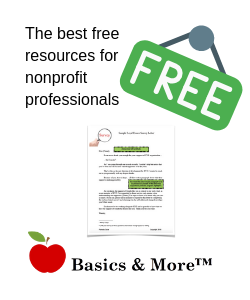
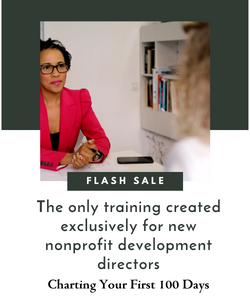



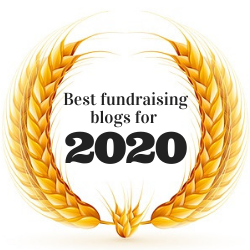


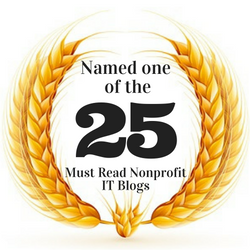
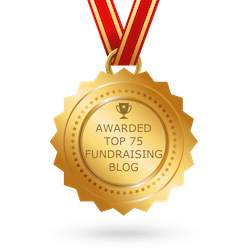








 I can’t wait to meet with you personally.
I can’t wait to meet with you personally.